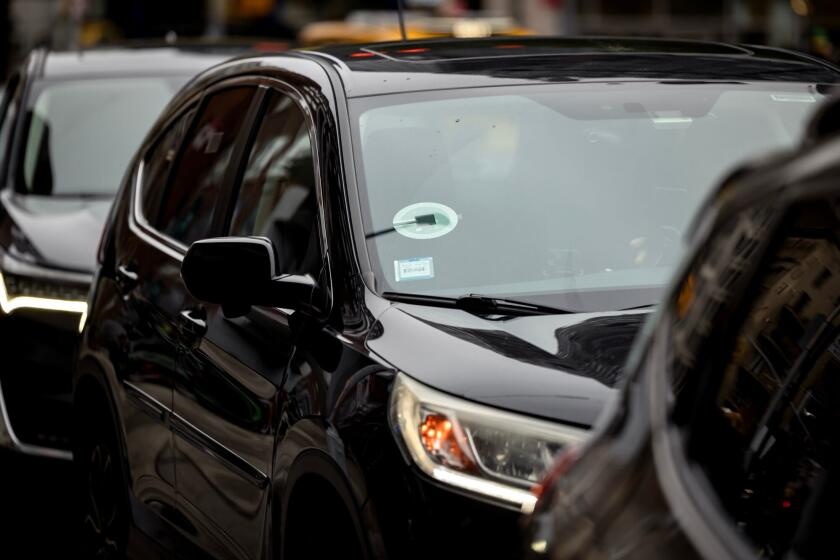Advocates Seeking Safer Way to Buckle Up
- Share via
The federal government wants everybody to buckle their seat belts, but small adults and children may be exposing themselves to a potential hazard with the most common seat belt systems on American cars.
The problem occurs when a shoulder harness crosses the neck or face, because the passenger is too short for the belt to fit properly. In a collision, a belt across the neck could crush the larynx or cause even more serious spinal injuries.
The National Highway Traffic Safety Administration, the federal agency that regulates auto safety, rejected a petition earlier this year that would have required auto manufacturers to provide a seat belt anchor with a height adjustment.
The feature, available on some European cars, allows a belt to be lowered or raised so that the shoulder harness crosses the thorax, the middle of the chest. This is the strongest portion of the body and the area best able to bear the force of a belt during a collision.
Barry Felrice, the associate administrator for rule making at the safety administration, said in a recent interview that variable anchors would improve the comfort of seat belts and have some safety benefit if more people use their seat belts.
But those benefits are difficult to define and not worth the estimated $104 million cost to require them on all seats in new cars and trucks, he said. The cost is about $1 per seat.
Felrice said he had no personal knowledge of any individuals who have been injured from a seat belt because it crossed the neck or face, but said such injuries are conceivable. There have been unconfirmed reports of severe lacerations to the neck and spinal damage.
Analyzing whether an injury in a crash is caused by improper use of a seat belt can be very tricky, since the injury may have occurred anyway. There are 44,000 highways deaths each year across the nation.
The safety administration’s own literature, however, recommends that children under 55 inches tall not wear a shoulder harnesses. While small children can be put into a booster seat, short adults face a more limited choice.
Obviously since women are shorter than men on average, they have greater problems. Safety groups have criticized the auto industry for basing virtually all of its safety research on hypothetical male passengers.
Many elect to place the shoulder belt under their arm. This is considered the most hazardous option, since that position puts the belt over soft abdominal organs that can be easily injured in a crash.
The other alternative is to place the harness behind the back and rely solely on the lap belt.
This provides little protection from hitting the steering wheel or dashboard in a forward crash. For small children, this could also exert forces on the pelvis that would cause serious injury.
The petition for variable anchor seat belts came from Motor Voters, a nonprofit organization in McLean, Va.
Rosemary Dunlap, president of the group, cites a recent University of Washington study that challenges the claims made by Felrice.
The report found that if the shoulder harness crosses the face or neck, then “such use may be very dangerous and result in an increased risk of injury.”
The study was based on an examination of accident victims admitted to Harborview Medical Center in Seattle.
Children, the study found, have a disproportionate amount of body mass above the pelvis, resulting in greater force on the torso.
Motor Voters was widely supported in its petition and the organizations backing the proposal are seeking a federal law to require the anchors.
In the meantime, the U.S. auto industry is beginning to equip some of its cars with such anchors.
Vartabedian cannot answer mail personally but will attempt to respond in this column to automotive questions of general interest. Do not telephone. Write to Your Wheels, Times Mirror Square, Los Angeles, Calif. 90053.







